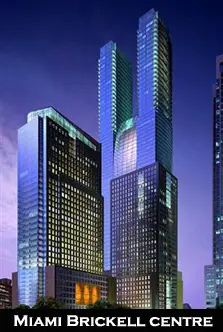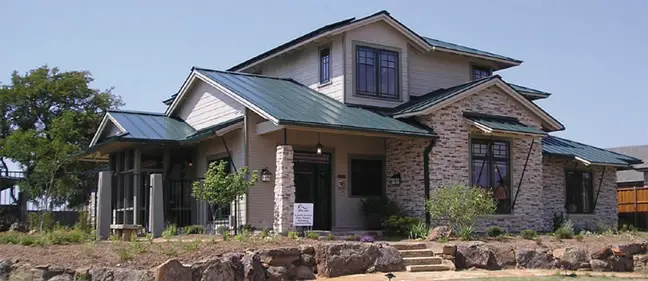 To bring into play the efficient buildings wedge means using a building’s individual components to do the same job as less efficient components for less money over the long term. Energy-efficient building components applies to everything from the building envelope, which includes energy efficient windows, lighting, insulation, foundation, and the roof, to office equipment that doesn’t waste energy sitting idle and equipment with built-in power management features. It also applies to space heating and cooling, which are aided through the use of automated controls, ventilation, improved duct systems, and other advanced technologies. Energy efficiency can also apply to water heating when combined with water-efficient appliances and fixtures that will save water, energy, and money.
To bring into play the efficient buildings wedge means using a building’s individual components to do the same job as less efficient components for less money over the long term. Energy-efficient building components applies to everything from the building envelope, which includes energy efficient windows, lighting, insulation, foundation, and the roof, to office equipment that doesn’t waste energy sitting idle and equipment with built-in power management features. It also applies to space heating and cooling, which are aided through the use of automated controls, ventilation, improved duct systems, and other advanced technologies. Energy efficiency can also apply to water heating when combined with water-efficient appliances and fixtures that will save water, energy, and money.

The Miami Brickell Financial Centre will use glass that has a “low-emissivity” coating allowing light to filter through but will block out heat from the sun. Windows will be set in from the exterior to providing shading. The integrated cooling system circulates cooled water rather than the inefficient refrigerant used in other buildings. Urinals are low flow and have dual flush valves (one for solid waste, another for liquid) which will cut down on water wastage. Large cisterns will collect storm water for irrigation, with any excess pumped back into the aquifer.
A interesting concept is Terra Structured Land, where the developers claim to use seventy percent less land area than that used in traditional mainstream building practice.
According to the Stern Report, buildings account for 8% of greenhouse gas emissions, or 20% if upstream emissions associated with electricity and heat are included. Greenhouse gas (GHG) emissions from buildings arise through:-
1. Direct combustion of fossil fuels in residential and commercial buildings, amounting to 3.3 Giga Tonnes of carbon dioxide
2. Upstream (indirect) carbon dioxide emissions from the power sector via demand for electricity and district heat. Buildings consume about half of the electricity and heat produced by the power sector. In this way buildings were indirectly accountable for about 5.4 Giga Tonnes of carbon dioxide in 2003.

The Zero Energy Home pictured above in North Texas, uses energy-efficient technology. Energy design is not thrown into or onto the home, but is integrated into every aspect of the home’s design, walls, and equipment.
To really maximise the efficient buildings wedge there is a need for increased efficiency involving innovative building design, lighting systems, along with heating and cooling technologies.
To secure the efficient buildings wedge, significant improvements to existing building codes and increasing the percentage of new construction to meet efficiency criteria is required. For instance, geothermal heat pumps (GHPs) are a relatively new technology that can save both commercial business and homeowners money. These ground-source heat pumps use the natural heat storage capacity of the earth or ground water to provide energy efficient heating and cooling. Recent developments in phase change materials means they are also being included in GHP fluid systems, increasing overall efficiency.
Efficiencies will need to be gained inside buildings as well as outside. The International Energy Agency (IEA) reports that electrical appliances are the fastest growing energy users, after automobiles in OECD countries. Despite the existence of major energy efficiency programs in OECD countries, residential electrical appliances still account for 30% of electricity consumption and 12% of greenhouse gas emissions. Based on existing appliances policy, demand is projected to grow 13% by 2010 and 25% by 2025.
